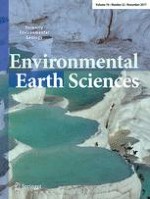01-11-2017 | Original Article
An experimental study on controlling post-earthquake debris flows using slit dams
Published in: Environmental Earth Sciences | Issue 22/2017
Log inActivate our intelligent search to find suitable subject content or patents.
Select sections of text to find matching patents with Artificial Intelligence. powered by
Select sections of text to find additional relevant content using AI-assisted search. powered by
